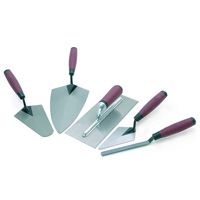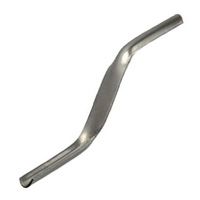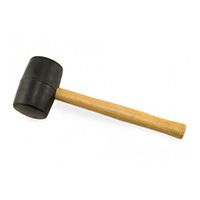We may be compensated if you purchase through links on our website. Our team is committed to delivering honest, objective, and independent reviews on home products and services.
Transforming a plain concrete wall into an eye-catching feature is easier than you might think. With stone veneer, you can dramatically improve the look of your wall, adding both beauty and value to your property. In the above video, Mark McCullough and Jenn Nawada from This Old House guide you through the process of applying thin stone veneer to achieve a stylish and durable finish.
Types of Stone Veneer for a Concrete Wall
Stone veneer is a popular choice for refacing concrete walls due to its natural look and long-lasting appeal. There are two main types to choose from:
- Manufactured stone veneer: Crafted from concrete, it mimics the appearance of natural stone and is more affordable and easier to install.
- Natural stone veneer: Cut from real stone, it offers a genuine, classic look that blends seamlessly with outdoor settings.
While manufactured veneer has its benefits, McCullough and Nawada prefer natural stone veneer like Connecticut fieldstone for its authentic appearance and organic charm.
Preparing the Concrete Wall
Preparation of the existing concrete wall helps create a strong bond with the stone veneer. Properly preparing the wall will set the groundwork for a successful installation. Here’s what to do:
- Clean the wall: Remove dirt, dust, and loose debris from the wall.
- Roughen the surface: Use a grinder to roughen the concrete, enhancing the mortar’s grip. Be careful not to grind too deeply—just enough to create texture.
- Leave low spots: Intentionally leave some uneven spots to improve adhesion.
- Rinse and scrub: Wash the wall thoroughly to remove dust, then allow it to dry before applying the stone.
Tools and Materials
Gather the following tools and materials for installation:
- Brush
- Grinder
- Jointer
- Level
- Monitor
- Trowels
Applying the Stone Veneer to a Concrete Wall
Once you’ve prepped the wall, you can start applying the stone veneer. Take your time to achieve a high-quality finish.
Mixing the Mortar
First, mix the mortar. Select a modified thin-set mortar, which includes adhesive properties for improved bonding on vertical surfaces. Mix the mortar following the instructions provided by the manufacturer. You want a consistency that’s thick enough to maintain its form while still being easily spreadable.
Laying the Stones
Now, lay the stones:
- Spread a layer of mortar on a small section of the wall using a notched trowel.
- “Back-butter” each stone by applying mortar to its flat side with a margin trowel.
- Press each stone firmly onto the wall, using a slight wiggling motion to create strong adhesion.
- Employ small stone chips to support the stones and prevent sagging as the mortar sets.
- Once the mortar sets, remove the support chips.
Creating the Pattern
Achieve a natural-looking pattern by mixing stones of various shapes and sizes:
- Start from the bottom of the wall and work your way up.
- Keep the joints between stones uniform for a clean look.
- Use a jointing tool to fill the gaps between stones with mortar.
In the video, McCullough demonstrates these techniques while highlighting the importance of proper mortar application and strategic stone placement for long-lasting results.
Adding the Stone Cap to a Concrete Wall
A stone cap enhances the wall’s look and protects it from water damage. McCullough and Nawada recommend bluestone for its durability and complementary color.
To add the stone cap:
- Prepare the wall’s top by applying a mortar layer.
- Slightly slope the mortar bed away from the patio to direct water runoff.
- Gently seat the bluestone cap pieces, making sure they slightly overhang on both sides.
- Check for level as you go, lightly tapping the stones into place with a rubber mallet.
- Fill gaps between cap stones with mortar for a seamless finish.
More Tips for a Professional Finish for a Concrete Wall
To create a professional-grade finish, keep these tips in mind:
- Allow the mortar to cure thoroughly before using the surrounding area.
- Clean excess mortar from the stones’ faces before it hardens completely.
- Periodically review the overall pattern to make any necessary adjustments.
- Work in small areas to prevent the mortar from drying before you set the stones.






